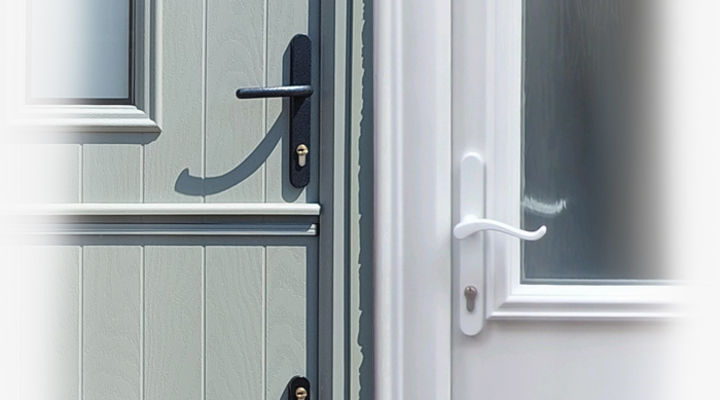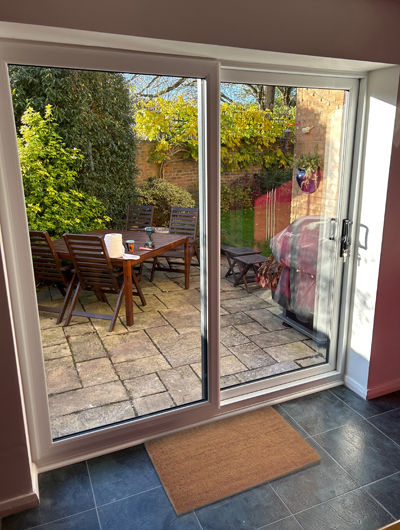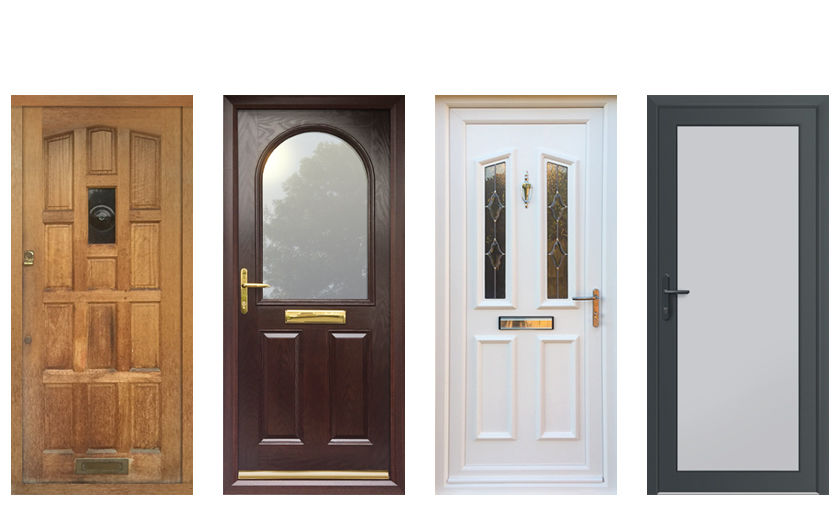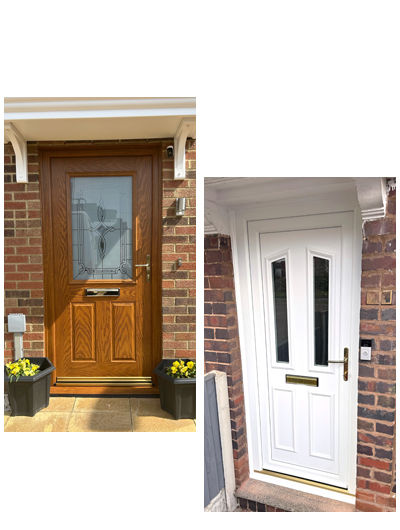Door Types

Want to know what type of door is best for your home in the long run? With this guide, you’ll learn what different doors are available for your home, the most common types to choose from, and how each door type measures up in aspects such as cost and security, to help you weight the options for your new door.
Exterior doors in UK homes
- Front doors - The face of every home, and usually the most decorative door, with several styles and finishes to choose from.
- Back doors - Tend to be simpler in style, but include the same range of styles and finishes as fronts should you require a more elaborate design.
- Doors with catflaps - A selection of door styles with pre-fitted catflaps, or pet doors for dogs.
- French doors - Also known as double doors. These tend to be fully glazed UPVC doors for garden entrances, but any style can be created as french doors for grander front home entrances.
- Sliding patio doors - Rather than arch out, these doors slide sideways, thus taking up less space. They are limited to fully glazed, but include options for decorative backing glass.
- Stable doors - They can operate as a single door, or as two separate parts, making them a versatile option to vent air into the home while keeping pets and small children safely indoors.


The most common exterior door types
- Wood - Timeless and sturdy, they come in several designs and have been a mainstay in British homes for centuries.
- Composite - Purpose-built doors with a similar look to wood, these are becoming a more popular option in UK homes due to their energy efficiency and low maintenance requirements.
- UPVC - Cost-effective and lightweight, UPVC is one of the first door types designed as an alternative to wooden residential doors.
- Aluminium - With their ultra-modern look, these high-end doors are a popular choice in contemporary homes.
What is the most common door in British homes?
Despite their recent invention, UPVC and composite are now the most common materials for external front and back doors, taking the place of wood, while traditional panelled designs are still favoured in fronts.
What is the cheapest type of door?
A standard UPVC front or back door is the cheapest option - it is lightweight compared to wood, composite and aluminium, and proves to be as energy efficient and low maintenance as composite, making it a budget-friendly choice. UPVC has a smoother, less wood-like surface than composite, but is available in woodgrain finishes like Golden Oak, Irish Oak and Rosewood to give it a similar look.
Which door type is the most durable?
Overall, composite offers the best durability, followed by aluminium. Both are sturdy door types that offer good security and weather resistance, while composite requires less maintenance from day-to-day use.


Which type of external door is the best?
- For energy efficiency - Composite and UPVC offer superior insulation as they are multi-layered, whereas wooden doors tend to be single-layered. Aluminium rates poorly, as it highly conductive.
- For weather resistance - Composite, UPVC and aluminium are designed to resist the changing British weather, whereas wood is vulnerable to the elements without sufficient protection.
- For security - Wood, composite, UPVC and aluminium are all just as good, before considering their longevity. Wood can fail due to deterioration, as it is not as readily weather resistant as the other doors.
- For low maintenance - Composite and UPVC by far outrank wood and aluminium. Scratches in aluminium can stand out too easily, while wood requires varnish and paint to stay looking like new.
Does a new door increase home value?
Yes, particularly if it is made to high quality, and offers high security and energy efficiency. With these factors, a wide range of styles available, and low maintenance requirements that are convenient for homeowners, composite and UPVC make good replacements for old wooden doors.
What styles are available?
- Traditional (also known as Classical) - Characterised by raised mouldings, these tried-and-tested designs have been popular in British homes for centuries.
- Contemporary (also known as Modern) - Often have a flusher surface and a liberal arrangement of glass, with some designs having them offset.
- Cottage - Rural in character, the slab or panel is grooved vertically and tends to have glass within the top half of the door.
- 1930s - Constructed with 1/4 or 3/4 sized glass and the remaining space with raised panels, designed to mirror the look of the Edwardian period.

Summary comparison of door types
|
|
Wood |
Composite |
UPVC |
Aluminium |
|
|
|
|
|
|
|
Weight |
heavy |
heavy |
light |
heavy |
|
Designs |
various |
various |
various |
limited |
|
|
|
|
|
|
|
Average cost (single door) |
££ |
££ |
£ |
£££ |
|
Standard energy efficiency |
fair |
good |
good |
poor |
|
Standard weather resistance |
fair |
good |
good |
good |
|
Security |
good |
good |
good |
good |
|
Maintenance |
high |
low |
low |
medium |
Ready to pick your new door?
Getting your new door is easy. Here are ways to do so:
- Call us free on 0800 910 1122.
- Send us a Quick Message via the blue tab on the right or on our Contact Us page.
- or browse hundreds of door styles online, and even customise features such as colour and hardware.
or

